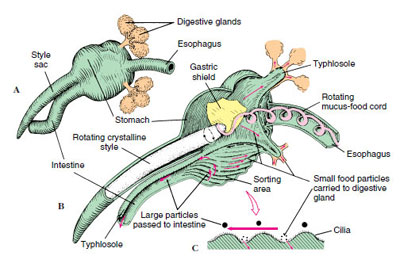
Eastern Oysters were once abundant in Barnegat Bay. Due to over harvesting and disease their numbers have been significantly reduced.
Oysters
Jonathan Swift, the author of Gulliver’s Travels, is quoted as saying:
“He was a bold man that first eat an oyster”
It’s a mystery as to when people first began eating oysters. Most likely, they witnessed an animal such as an otter opening and eating, what at first glance, looked like a rock.
Whatever the origins, people have valued oysters as a food source since recorded history.
Particularly prized by early Greek and Roman cultures, oysters are exceptionally nutrient-rich foods that contain protein and carbohydrates.
Eastern Oyster Crassostrea virginica
 The eastern oyster is a species of true oyster native to the eastern seaboard and Gulf of Mexico coast of North America.
The eastern oyster is a species of true oyster native to the eastern seaboard and Gulf of Mexico coast of North America.
The shell of the eastern oyster is thick, flattened, and highly variable in shape.
Oysters are bivalves, which means that their shell is made of two halves, or valves.
The valves are joined at the top at the hinge.
The hinge has two ligaments.
The external ligament is flexible and provides the axis of movement for the two halves of the shell.
The internal ligament is called the resilium. When the adductor muscle of the oyster is relaxed, the external ligament and resilium work together to open the shell.
A single adductor muscle in the center hold the shell closed.
The ligaments are positioned where the valves come together, and usually keeps the valves open so the oyster can eat.
The shell grows from round (irregular) to oval and usually bears concentric ridges.
The two valves of the oyster shell, which differ in shape, have rough surfaces that are often a dirty gray.
The upper valve is convex, or higher at the middle than at the edges.
The lower valve, fixed to the bottom or to another surface, is larger, has smoother edges, and is rather flat.
The inner surfaces of both valves are smooth and white except for the muscle scar, which is deep purple.
The exterior color of the shell is dirty white to gray.
Unlike clams, oysters do not dig themselves into the bay bottom for protection.
They clustering on older shells, rock, piers, or any hard, submerged surface.
Once attached, unless disturbed, will spend the rest of their lives in that location.
Oysters are filter-feeders. They open their shell and draw in water, which includes their food (phytoplankton) and other small particles as well.
Oysters filter so much water that a large population of oysters can effectively help keep a body of water clean.)
Fun Fact – An adult oyster can filter up to 50 gallons of water per day
